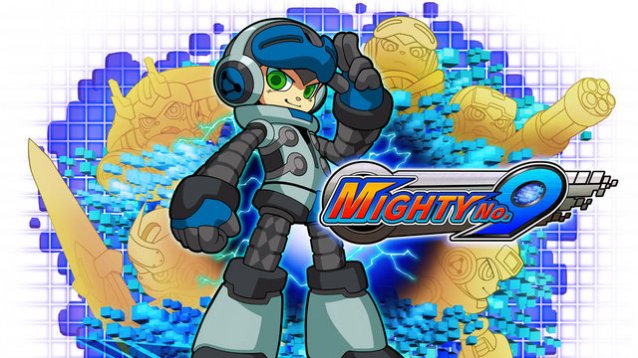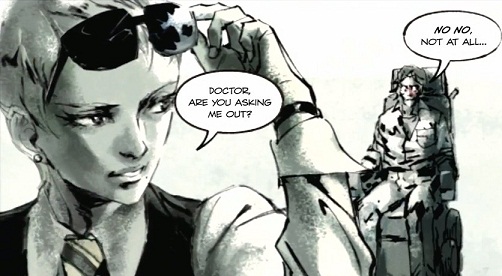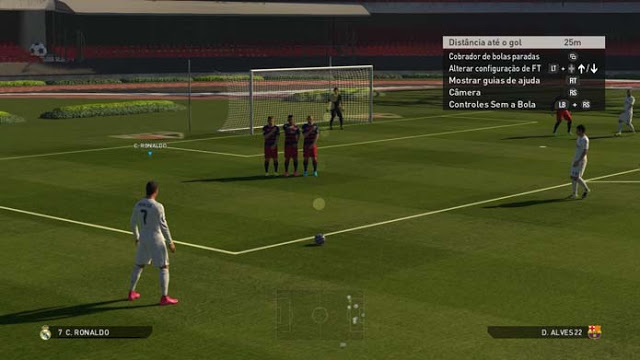

When Super Smash Bros. launched in 1999 on the Nintendo 64, it created a new genre in the same way that Street Fighter II (or for me that’s MK) brought fighting games to the masses. 15 years later a new installment of the franchise is here on the Nintendo 3ds, and soon to be on Nintendo Wii U. We have compiled some basic tips to help get your started with Super Smash Bros.
Super Smash Bros first appearance on the Nintendo 3DS is relativity similar to consoles. The core experience is still the same just like you remember it, and it’s a blast to play.
K.O.
The objective of each match is to knockout your opponent, causing he/she to lose a life. The winner is decided by whoever has the most lives left. At the bottom of the screen, battle damage is presented for each character in play. Over the course of the battle, higher character damage percentage can equal the greater distance a character will travel when hit. This called a knockback hit, which is a knockout punch in a fight.
Fighting stages in Super Smash Bros. are large stages to roam around in, but be careful. It’s considered a KO in Super Smash Bros. if you fall off the fighting stage, and your fighter moves beyond the invisible boundary. When this happens your fighter’s damage resets to zero. In order to score kills, you need to be the last player to inflict damage before the fighter suffers a knockout. It’s considered a suicide death if no other players inflected damaged.
It’s important to note that even if you have not attack an opposing fighter during the duration of the match, but successfully landed the last hit you will be awarded with a KO. This can result in stealing a Kill from your friend, which occurs frequently in four-player free-for-all matches.
Once your character has been knocked off the stage, one of two things occurs: your character is knocked far enough away that they exit the "box" of the stage and die instantly (KO), or you're merely knocked away from the central portion of the stage and have the ability to make your back to the center platform. Trying to get back to the center platform is generally referred to as “recovering" in a Smash Bros. game.
Falcon Punch
Movement in Super Smash Bros. is done using the analog stick. You can control your character on the ground, and how he, or she moves in the air with you press jump button. Every character has a double jump option available to use. Some characters have a recovery move, which propels the fighter upward. When used right, this can act as a third jump option for players to escape death, and get themselves back in the ring standing on their two feet.
Can't Stop the Top
In this installment Super Smash Bros doesn’t introduce combo skill tree. The focus is to make the combat simple, fun, and addictive. In Super Smash Bros, the higher a character’s damage, the more likely of them being knocked out. The general rule of thumb with Super Smash Bros. is that some attacks power no matter what the character’s damage is. Because of this certain attacks on may not work on a character with high damage rating. Combos depend on estimating, which direction your opponent will move after each attack lands.
However you do have ways to defend yourself after being hit. If you get hit in the air you can double jump away from the action. This can effectively end opponent’s combo, but at the same time this isn’t a perfect method. If your opponent can guess your next move he can continue where he left off.
Every match plays different so it’s important to watch how your rival reacts to get an idea on which direction they will jump after being hit. There’re two factors that can change how much damage you do per attack. The weight class of your chosen fighter can decide how much power they have, or how fast they fall.
Smash Attacks
A Smash Attack is generally a very damaging attack with high knockback, which is performed by moving the analog stick as far as possible in a single direction while pressing A (using default controls). Think of it as though you're "smashing" the analog stick in the direction. If you just move it slightly in one direction, you'll get a different attack.
Each character usually has four Smash Attacks: Up, Down, Forward and Back. These attacks aren't very fast, but they pack a big punch and can usually be charged (hold A) for extra damage and knockback. Some Smash Attacks can be used to end combos, while others are great when you catch an opponent off-guard. You should not rely heavily on Smash Attacks because they are relatively easy to avoid and your character is usually left vulnerable to a counter attack if you miss.
Smash Attacks are best used in situations when they are virtually guaranteed to connect. For example, if you knock an opponent off of a stage and he or she is trying to make their way back onto the stage. If you stand near the edge of the stage and wait until the opposing character gets close, this is usually a good time to use a Smash Attack. Likewise, if two opposing players are attacking each other, you can sneak in a Smash Attack while they're preoccupied.
Tilts and Aerial Attacks
Tilts and Aerials are generally not as powerful as Smash Attacks, but that varies depending on the attack. Some Tilts and Aerials are far more powerful than others. In most cases, these attacks are faster than Smash Attacks and should be used more frequently during combos and throughout a match. If a Smash Attack is executed by moving the analog stick as far as it will go in a given direction, simply “tilting” the analog stick in the desired direction performs a Tilt Attack. Like Smash Attacks, most characters have a Forward, Back, Up and Down Tilt.
There are no aerial Smash Attacks, so while in the air, all you need to do is press in the direction of the attack you wish to use to perform the Aerial. For example, if you wish to use a Down Aerial (also known as a Down Air), simply press Down and A (default controls) while in the air. Unlike the difference between a Smash Attack and a Tilt Attack, the amount of pressure you apply to the analog stick does not matter when it comes to Aerials.
It's important to note how much "ending lag" each Tilt and Aerial has. This is basically the amount of time between the completed execution of the attack and when you can perform another attack or action. For example, if you use a Down Air, then hold your Shield button, pay attention to the time between the end of the Down Air attack and the appearance of your Shield. The longer it takes for your shield to appear, the more ending lag the attack has. Attacks with a lot of ending lag are generally less useful than attacks with minimal ending lag. In other fighting games, this is generally referred to as "recovery" but in Smash Bros. recovery has a different meaning, so "ending lag" is used in its place.
Do a Barrel Roll
Special moves are assigned to the default A button, while Tilts and Aerials are assigned to the B button on the Nintendo 3DS. Most characters have four special moves: Neutral, Up, Down, and Side.
What separates special moves from Smash Attack tilts or aerials is the change dramatically from fighter to fighter. Each fighter has a set of special moves designed that capture the fighter’s identity. Fox McCloud’s special move involving his Laser Blaster is meant for long distance use. While Little Mac’s special moves consist primarily of short range moves.
It's Dangerous to Go Alone
In order to stay in matches, it’s very important to learn how to block. By pressing the block or shield button, a bubble will appear around your character. Over time holding the bubble will begin to get smaller, and if it breaks by your behalf it will temporarily stun your fighter. You can stop this instantly by releasing your shield, and allowing it to regenerate to full strength.
However the bubble doesn’t cover your character completely. Anything visual out of the shield can be hit to cause extra damage. With experience you will learn a technique called shield stabbing. This is when you attack a vulnerable area outside the bubble while rival is shielded.
While being shielded you can roll your fighter left or right to get away from potential attacks, and setup potential combos. Don’t too often because it will leave you vulnerable to ground attacks. Rolling should be used as a last case scenario if your opponent is the middle of a combo. Super Smash Bros. presents many ways of breaking down your rival’s defense.
Grabbing (also known as Throwing) your opponent dismantles your opponents shielding ability. It’s an unavoidable grab that can swing the fight back in your favor. To activate on of the few combos in Super Smash Bros. is if you grab, then press down, you fighter performs a Down Grab. This causes more damage than a regular attack, and cam be chained together to start a KO. Link and Smus have tether grabs, which are grabs that are longer than normal grabs. Their only fault is they’re weaker, but they can be used to latch onto walls when your fighter is falling down the rabbit hole.
On the Edge
New to the series is the mechanic called “edge guarding”. This helps stop rivals from making it back to the stage. The tactic involves using special moves to keep an opponent away. It’s simple to use, and has layers have depth to master.
To activate the mechanic you must knock your rival off the stage then wait by the edge of the platform, and anticipate his return approach. Once you hit your opponent he will fall for an easy Knockout.
Over time we started to experiment with this mechanic the more we got used to it. For example we found jumping off the main platform following an opponent opens up the opportunity for knockback punch at your opponent. This caused an instant KO, or made it impossible to get back to the stage.
Directional Influence
Super Smash Bros. on the Nintendo 3DS works a bit differently in the way directional influence has been implemented. Previously it wasn’t possible to decrease the knockback force, however this time you can change the course the path you’re heading on. If your opponent throws you in the air, you have the option to glide to whatever direction without penalty. Knowing when to glide can save you lives in battle. Once you understand the timing, the mechanic becomes an important defensive tool.




 CoD: Black Ops III – How to Get Five Attachments on a Gun
CoD: Black Ops III – How to Get Five Attachments on a Gun PES 2016 - Score Goals on Penalties and Free Kicks
PES 2016 - Score Goals on Penalties and Free Kicks Dogmeat: Fallout 4 - Find and Recruit dog as a companion
Dogmeat: Fallout 4 - Find and Recruit dog as a companion Destiny: Weapon Stats Explained Guide
Destiny: Weapon Stats Explained Guide Speedrunning Culture: The Future of Single-Player Gaming
Speedrunning Culture: The Future of Single-Player Gaming